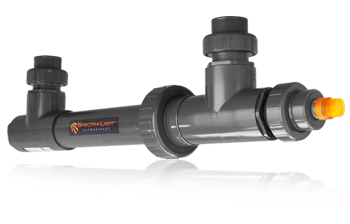Shopping Cart
All orders qualify for risk-free 30 day trial & complimentary US shipping!
-- No items so far --
Total:
0
Support
Need help? Our Pool Experts are here to help.
All orders qualify for risk-free 30 day trial & complimentary US shipping!
-- No items so far --
Total:
0
Need help? Our Pool Experts are here to help.
Pool pumps are one of those things that most pool owners never think about until it goes out. You may be surprised to learn that you could shave $800, $900, or even a $1,000. from your annual electric bill. Unfortunately, millions of pool owners have been sold inefficient, high horsepower single-speed pumps which are simply too much pump for circulating the water through the small two inch pipes found on most pools. You may be asking, but isn’t horsepower a good thing? Can we really have too much horsepower? If you care about energy conservation and your pocketbook, you can definitely have too much horsepower.
Contrary to what your pool salesman may have told you, a bigger pool pump is not better. Some pool builders have pushed 1.5 HP or even 2HP single speed pumps for years. There are two problems with high horsepower pumps. First, high horsepower pool pumps use a lot more power. It’s not uncommon for a 1.5 horsepower pump to use 1500 – 2000 watts. This is unfortunate, because most pools only need 1/4 to 1/8th horsepower for circulation. Higher power may be needed for tasks like vacuuming the pool. Modern pool pumps like the EcoPump offer a circulation mode, and a vacuum mode.
The most important factor on electrical use is the amp rating, which determines how much electricity is used. High horsepower motors draw more amps but don’t move water much faster through your circulation systems. The flow is limited by the size of the pipes. Since backyard pools usually have two inch piping, a high horsepower pump will strain to move water quickly. A straining pump will burn out prematurely and quickly inflate your electric bill.
One of the biggest misconceptions is that pool water should be circulated as rapidly as possible, and then the pump should be shut off. The exact opposite is true. It is much more efficient, both from a cost perspective and a sanitation perspective to run a pump slower, and run it for 24 hours. From a sanitation point of view, moving water is much easier to maintain than stagnant water. If your pump is off, it is impossible to add chlorine through a chlorinator, pool automation systems, or salt chlorine generator. It’s also impossible to control pH.
Slow speed pool pumps allow filters to operate more efficiently. When water is moved across a filtration media slowly, smaller particles can be trapped by the media.
The amount of horsepower required to move the water through your pipes and circulation system decrease much faster than the speed of the water. This is due to friction and other principles of physics. For example, it may take 1 full horsepower to move the water through your pipes at 60 gallons per minute, but it only takes 1/8 HP to move the water through at 30 gallons per minute. It is tremendously more cost efficient to operate a pump at 1/8 HP. Most of the new energy efficient pool pumps can be adjusted on two or more settings, which also allows you to operate a pool cleaner or vacuum the pool.

It’s easy to calculate what your pump is costing you. We’ll take a look at the formula and complete an example. Ohm’s Law says that if we know the voltage and amperage, we can calculate the watts. First, you’ll want to take a look at your pump label. The amp rating is listed on the label, and is given as two numbers. For example, (amps: 18/9). The lower number applies when connected to 115 volts, and the higher number is when connected to 230 volts. A single number here indicates it can only be wired for 230 volts. Use the lower number if your pump is wired to 230 and the higher number for 115.
You may notice that the final wattage number is the same, regardless of whether the pump is wired for 230 volts or 115 volts. If we look at the same pump, and simply change it from 115 volts to 230 volts, there is no significant improvement in efficiency. This is another common misconception. Ok, now that we have the details out of the way, lets take a look at some numbers and walk through the calculation.
Step 1
Multiply the volts X amps to get watts
230 volt x 9.0 amps = 2,070 watts
Step 2
Divide by 1000 to arrive at KWh
2,070/1,000 = 2.070 KWh
Step 3
Multiply by the numbers of hours per day pump is operating
2.070 x 12 hours = 24.84 KWh per day
Step 4
Multiply by cost per KWh by the KWh for daily cost 24.84 x .15 (KWh are usually $.10 to $.30) = $3.73 per day
That’s $3.73 cents per day to operate this inefficient pump. Operating this pump 12 hours per day will cost about $1,361. per year! Our energy efficient pumps have a 1.6 amp rating when operated on circulate. If we recalculate the numbers, you’ll see that we can operate the energy EcoPump 24 hours a day, and it will cost only $1.32 per day! If we cut the run time back to 18 hours per day, we cut the daily cost to only 99 cents. That’s an annual savings of 73% or $996!
There are a number of alternatives for swimming pool sanitation. Compare UV to chlorine, ozone, ionization and other technologies here.
